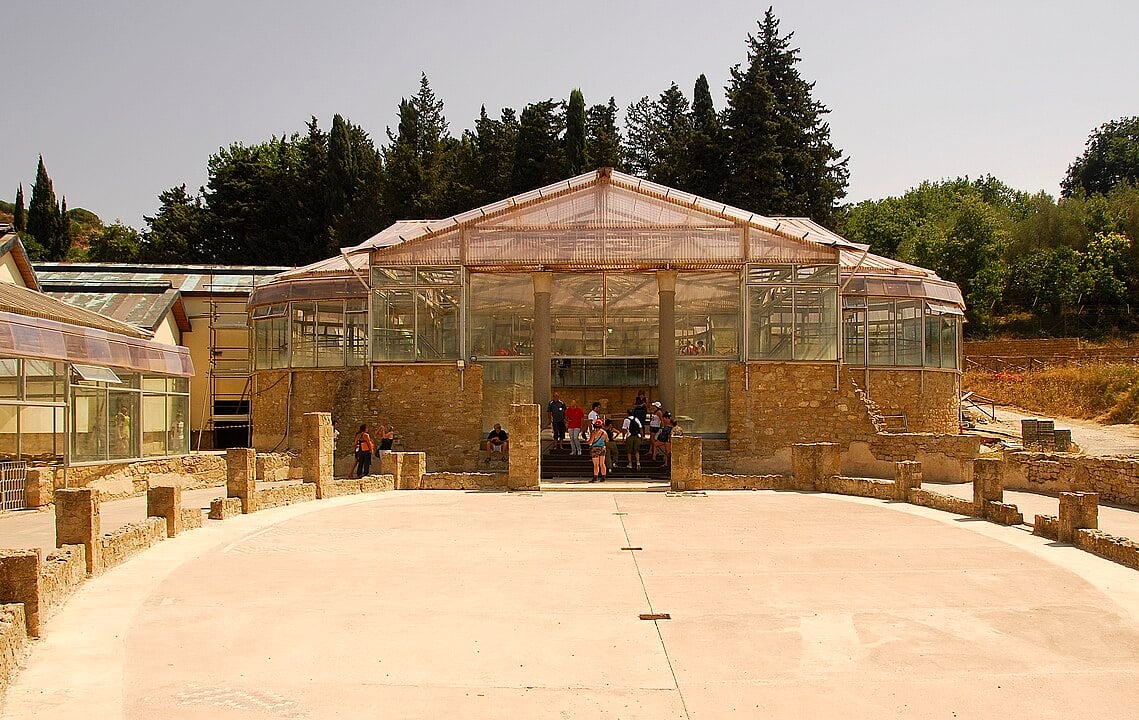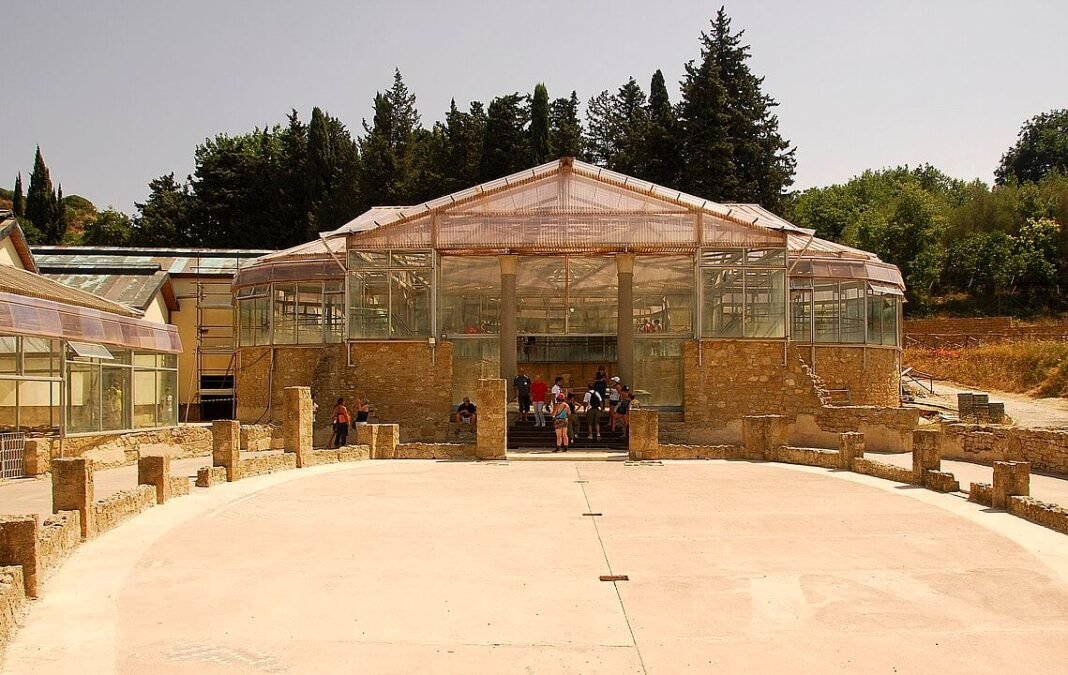
Archaeologists in Sicily, Italy have uncovered a striking mosaic depicting what appear to be Roman-era flip-flops, adding a new chapter to the rich artistic heritage of the Villa Romana del Casale. The sandals, crafted in the fourth century A.D., were found in the villa’s southern bath complex during ongoing excavations.
The discovery includes more than the footwear motif. Alongside the sandals, researchers identified a mosaic inscription and three columns with capitals. Specialists say the artifacts highlight the villa’s exceptional craftsmanship, providing fresh insight into decorative themes used in elite Roman residences.
Part of a UNESCO World Heritage Site
The Villa Romana del Casale, located about four kilometers from Piazza Armerina, has been a UNESCO World Heritage Site since 1997. It is celebrated for its extensive mosaics, including the famous “Bikini Girls” and “Great Hunt” scenes, which depict athletic women and large-scale animal captures.
Though popularly called a villa, scholars argue its design resembles an imperial palace more than a rural estate. Built between 320 and 370 A.D., the complex combines ceremonial halls, private apartments, gardens, and an elaborate bath system. Its architecture reflects the lifestyle of Rome’s high aristocracy during Late Antiquity.

Excavation Background
The site was first explored in 1950 by archaeologist Gino Vinicio Gentili, who dated the mosaics to the mid-fourth century based on style. Later studies refined the timeline, linking construction to the Tetrarchic and Constantinian periods.
Over time, the villa underwent multiple renovations, including fortifications in the fifth and sixth centuries, and was ultimately destroyed by Norman forces in the 12th century.
Discovery Linked to Summer Field School
This season’s discoveries coincide with the ArchLabs Summer School, an international training program on Late Antique and Byzantine archaeology directed by Isabella Baldini. The program drew more than 40 students and researchers from 11 countries to Piazza Armerina for hands-on excavation, digital documentation, and artifact analysis.
The initiative is organized by the Archaeological Park of Morgantina and Villa Romana del Casale, the University of Bologna, and Italy’s National Research Council. By combining academic expertise with fieldwork, the program advances research while preparing the next generation of archaeologists.
Cultural Significance
Researchers say the mosaic sandals, which resemble modern flip-flops, enrich understanding of daily life and artistic expression in Roman Sicily. Each new find they add strengthens knowledge of the island’s role in Mediterranean trade and culture during the fourth century, when Sicily shifted from slave-based estates to prosperous aristocratic residences.


